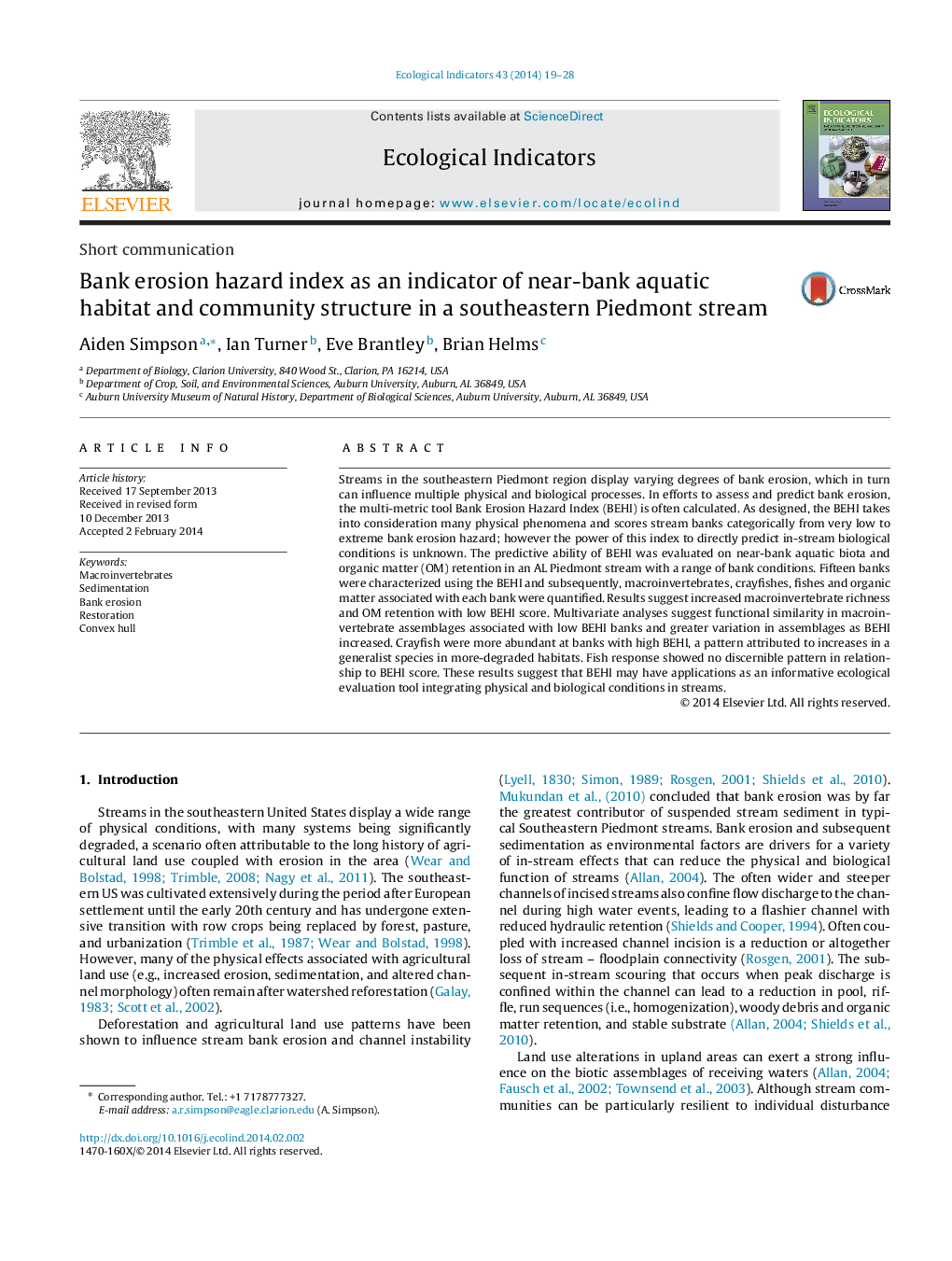| کد مقاله | کد نشریه | سال انتشار | مقاله انگلیسی | نسخه تمام متن |
|---|---|---|---|---|
| 4373154 | 1617158 | 2014 | 10 صفحه PDF | دانلود رایگان |
• We compared the instream aquatic habitat of 15 banks in an AL Piedmont stream.
• We evaluated the ability of the Bank Erosion Hazard Index to predict aquatic habitat.
• Stream communities next to low erosion banks were more stable and diverse.
• Stream communities next to high erosion banks were dominated by opportunist species.
Streams in the southeastern Piedmont region display varying degrees of bank erosion, which in turn can influence multiple physical and biological processes. In efforts to assess and predict bank erosion, the multi-metric tool Bank Erosion Hazard Index (BEHI) is often calculated. As designed, the BEHI takes into consideration many physical phenomena and scores stream banks categorically from very low to extreme bank erosion hazard; however the power of this index to directly predict in-stream biological conditions is unknown. The predictive ability of BEHI was evaluated on near-bank aquatic biota and organic matter (OM) retention in an AL Piedmont stream with a range of bank conditions. Fifteen banks were characterized using the BEHI and subsequently, macroinvertebrates, crayfishes, fishes and organic matter associated with each bank were quantified. Results suggest increased macroinvertebrate richness and OM retention with low BEHI score. Multivariate analyses suggest functional similarity in macroinvertebrate assemblages associated with low BEHI banks and greater variation in assemblages as BEHI increased. Crayfish were more abundant at banks with high BEHI, a pattern attributed to increases in a generalist species in more-degraded habitats. Fish response showed no discernible pattern in relationship to BEHI score. These results suggest that BEHI may have applications as an informative ecological evaluation tool integrating physical and biological conditions in streams.
Journal: Ecological Indicators - Volume 43, August 2014, Pages 19–28
